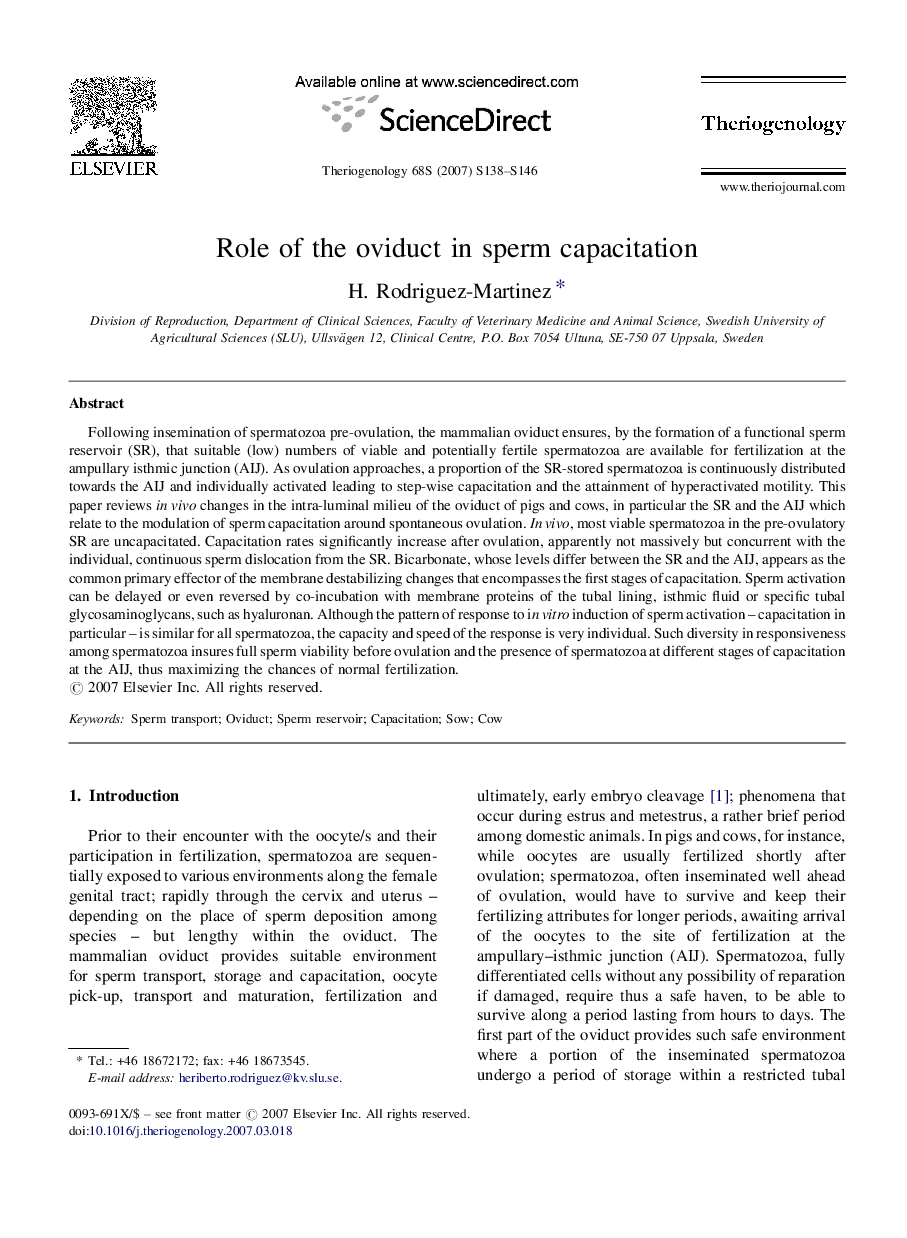| Article ID | Journal | Published Year | Pages | File Type |
|---|---|---|---|---|
| 2096352 | Theriogenology | 2007 | 9 Pages |
Following insemination of spermatozoa pre-ovulation, the mammalian oviduct ensures, by the formation of a functional sperm reservoir (SR), that suitable (low) numbers of viable and potentially fertile spermatozoa are available for fertilization at the ampullary isthmic junction (AIJ). As ovulation approaches, a proportion of the SR-stored spermatozoa is continuously distributed towards the AIJ and individually activated leading to step-wise capacitation and the attainment of hyperactivated motility. This paper reviews in vivo changes in the intra-luminal milieu of the oviduct of pigs and cows, in particular the SR and the AIJ which relate to the modulation of sperm capacitation around spontaneous ovulation. In vivo, most viable spermatozoa in the pre-ovulatory SR are uncapacitated. Capacitation rates significantly increase after ovulation, apparently not massively but concurrent with the individual, continuous sperm dislocation from the SR. Bicarbonate, whose levels differ between the SR and the AIJ, appears as the common primary effector of the membrane destabilizing changes that encompasses the first stages of capacitation. Sperm activation can be delayed or even reversed by co-incubation with membrane proteins of the tubal lining, isthmic fluid or specific tubal glycosaminoglycans, such as hyaluronan. Although the pattern of response to in vitro induction of sperm activation – capacitation in particular – is similar for all spermatozoa, the capacity and speed of the response is very individual. Such diversity in responsiveness among spermatozoa insures full sperm viability before ovulation and the presence of spermatozoa at different stages of capacitation at the AIJ, thus maximizing the chances of normal fertilization.
